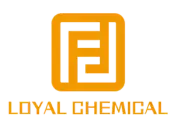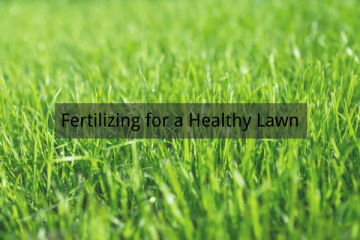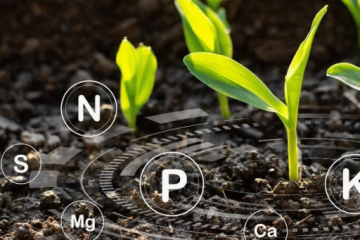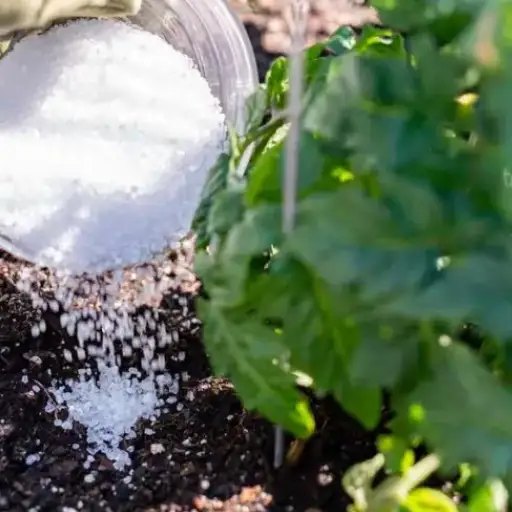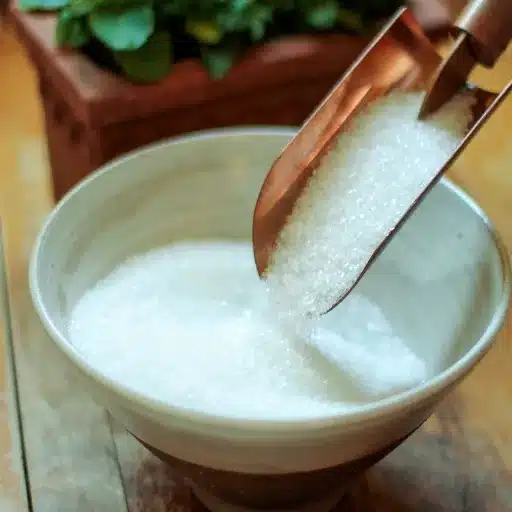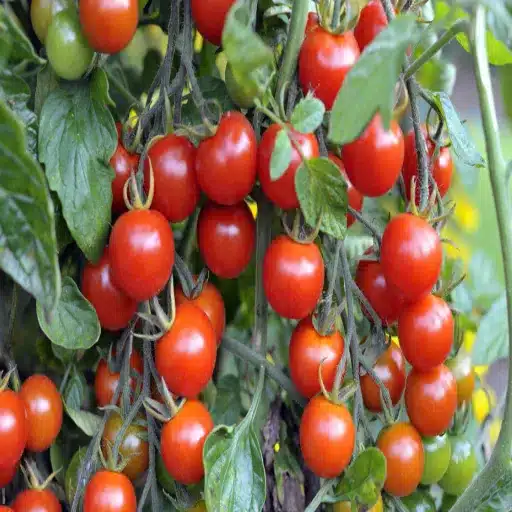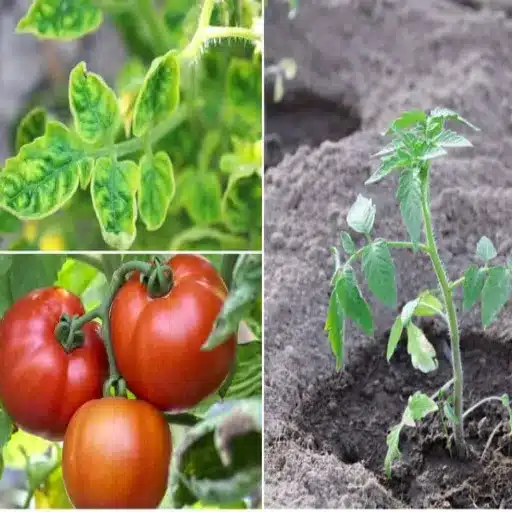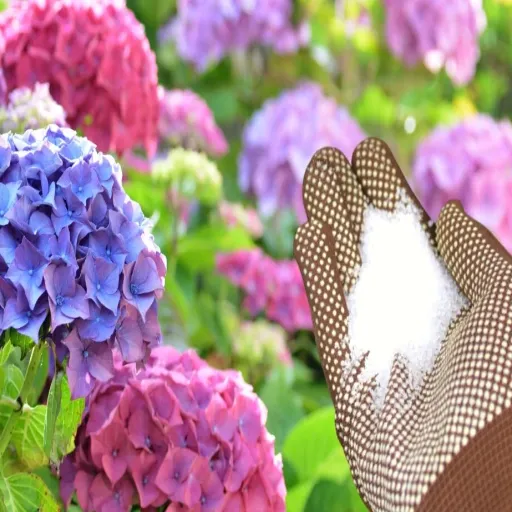Gardening enthusiasts and professionals alike are always seeking simple, effective methods to improve plant health and boost yields. One versatile and often overlooked solution is Epsom salt—a natural compound rich in magnesium sulfate. This inexpensive, readily available product has been used for decades to promote vibrant foliage, stronger roots, and abundant blooms. But how exactly does Epsom salt work, and what benefits does it provide to your plants? In this article, we’ll explore the science behind Epsom salt’s role in plant growth, discuss its practical applications in gardening, and provide you with actionable tips to maximize its impact. Whether you’re a seasoned gardener or just starting, understanding how to use Epsom salt effectively can revolutionize your approach to plant care.
What is Epsom Salt and Why is it Good for Plants?

How Magnesium Sulfate Benefits Your Garden
Epsom salt or magnesium sulfate is formed by the combination of magnesium, sulfur, and oxygen. All three ingredients are vital in the upkeep of a plant and soil. Magnesium is important in green plant growth or chlorophyll as it helps in photosynthesis. Photosynthesis helps in the creation of energy by the plant by converting sunlight into energy. If a plant has magnesium, it will make sure that it’s able to properly absorb nutrients and has full, lush green foliage, which helps in its growth. But in case magnesium is not present, the plant has chance of stunted growth or reduced yield, which leads to yellowing leaves.
One of the primary ingredients in magnesium sulfate is sulfur. It is also helpful in making the work of enzymes easier. As a result the plant grows healthier. The athlete of the soil which is sulfur is helpful in the structure of the soil as it lowers down the PH level in alkaline soil. It creates a suital environment for the nutrients to be absorbed by the plants.
When used together magnesium and sulfar have better effects when applied in gardening as a whole. Magnesium eases the absorption of phosphorus which is extremely usefull macronutrient in root and flower development. Rest of the magic is done by sulfar as it aids the plant to support environment strain like extreme temperature or lack of rain and aids in the sustenance of metabolism processes in the plant.
Applying Epsom salt in gardening can have positive impacts like enhanced fruit yield and robust blossoming plants. But, it is important to conduct soil tests before its use as overuse may cause nutritional imbalances. Gardeners can achieve optimal plant health by magnesium sulfating in a controlled manner.
Why Plants Like Epsom Salt: Key Nutrients Explained
Epsom salt, also known as Magnesium sulfate (MgSO₄·7H₂O), is extremely important for the health of plants since it provides them with magnesium (Mg) and sulfur (S)—the two main constituents required for enabling several physiological functions in plants.
Photosynthesis cannot take place in the absence of chlorophyll, which requires magnesium for its greenness. Deficiency of magnesium causes plants to suffer from chlorosis, i.e., yellowing of leaves, since the synthesis of chlorophyll is not possible. Not only does magnesium assist the plants in energy conversion, but it also enables enzyme activation, improving the intake of vital nutrients such as nitrogen and phosphorus. These processes make the plants responsive to magnesium and result in higher fruit yields along with better foliage. Tomatoes, peppers, and roses are some plants that show the best results.
Epsom salt’s other crucial constituent–sulfur–is equally helpful in the metabolism of a plant. Fuels the formation of Vitamins and enzymes, along with sulfur, which works to enable the amino acids and proteins. Having the ability to improve the resiliency of a plant, especially in depleted or poor soil, enables it to withstand environmental stress.
The increasing commonness of magnesium and sulfur deficiencies in soil to the practice of more intensive agriculture and frequent crop rotations. Epsom salts can help mitigate these deficiencies in a relatively effective manner, especially in soils that naturally have low concentrations of these elements, but using Epsom salts requires careful consideration. Conducting soil or tissue tests to avoid excessive application of Epsom salts is crucial because it can result in blocked access to other vital nutrients like calcium and potassium, leading to wastage of resources.
With adequate understanding of the biochemistry of magnesium and sulfur, coupled with an appropriate dosage of Epsom salt, gardeners and agricultural practitioners can encourage healthier, more productive plants while maintaining balance in soil nutrients.
How to Use Epsom Salt in the Garden Effectively?
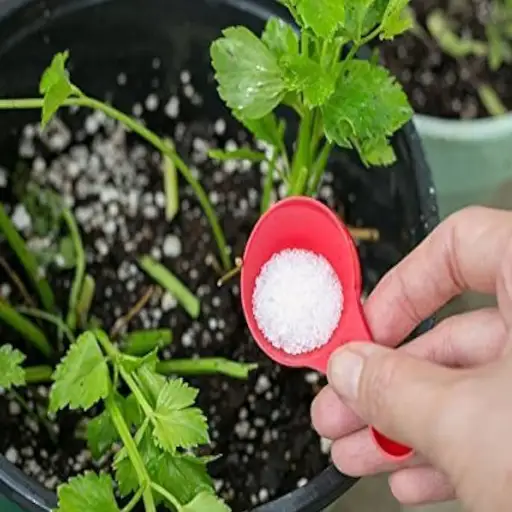
Methods to Add Epsom Salt to Soil
- Sowing with Epsom Salt Application: One of the easiest and most reliable methods to apply Epsom salt involves sprinkling Epsom salt on the soil surface and watering it afterward. A basic guideline is using about 1 tablespoon of Epsom salt for every 1 square foot of garden bed, making sure the salt is soaked with water afterward and will dissolve into the soil post-irrigation. This method seems to be effective for other types of plants that have magnesium deficiency issues, like tomato, pepper, and rose plants.
- Dissolved Epsom Salt for Foil Application: The reason why some people believe that Epsom salt should be dissolved in water is to ensure effective dosing of magnesium and sulfur to plant roots, which are very essential minerals to plants. A frequent recommendation is to dissolve 1 tablespoon of Epsom salt in 1 gallon of water and pour the mixture over the soil where the stem of the plant is located. This method enhances accessibility for nutrients to a more favorable state and is normally employed during the primary periods of growth or blossoming.
- Mixing with Other Fertilizers: It is well known that Epsom salt can be incorporated into organic fertilizers and also into synthetic ones or commercially unavailable fertilizers to make the nutrient profile of plants better. Increasing the magnesium and sulfur content of regular salt formulations can be done by mixing 1/4 to 1/2 cup of Epsom salt in every 10 pounds of fertilizer. This technique provides salient advantages in nutrition distribution, especially in farming where soil and crops are used repeatedly, and uniformity in nutrient distribution becomes so important.
- Pre-Planting Epsom Salt Supplimentation: Using Epsom salt aids in long-term soil aid before planting crops. For every 100 square feet of planting area, incorporating 1 cup of Epsom Salt into the top 6 inches of soil improves magnesium accessibility, through encouraging muscle motion and quiet power management structure. This is the most preffered method to fill crops using magnesium deficient plant skeletons like beans, squashes, and cucumbers.
- Fixing Magnesium Deficiency: If certain plants show visible signs of magnesium deficiency, applying targeted supplementation will work best. Suffering plants can be cured with the Sous Vide Method by applying a mixture of 1 teaspoon of Epsom salt into the precipitate of water over the root area.
These methods change how Epsom salt can be and should be used towards fulfilling different conditions and ailment requirements, ensuring a balance of nutrients sufficiency needed while maintaining sustainable plantation growth capacity. As such, while these techniques aid in ensuring optimum growth and health of plants, careful tracking of soil nutrient levels is important to avert overapplication of prescribed nutrients where plant land becomes unhealthy along with deviser expanding. That said, this approach aids in fundamentally supporting vigorous growth while keeping environmental impacts low.
Correct Dosage: How Much Epsom Salt Per Gallon of Water?
Different species of plants have unique needs, which affect how much Epsom salt they require per gallon of water. In general, though, for most species of plants, a good base measurement is dissolving 1-2 tablespoons of the salt in water. This adequate Epsom’s concentration allows for an optimal supply of magnesium and sulfur while still preventing nutrient imbalances or deficiencies. A more concentrated solution of 1 teaspoon of Epsom’s salt per gallon suffices for smaller plants and houseplants to attain non-oversaturation.
The mixture can be applied as a soil drench or used as a foliar spray. Apply the mixture evenly across the root zone of the plant to assist rooted plants with easy nutrient absorption is best done using soil drenches. If necessary, Epsom’s salt can also help without touching the stem. When applied to the leaves with a spray, it can help indirectly. Most effective are the aids for plants that have incompletely yellow leaves in conjunction with stunted growth due to magnesium deficiency.
The solution should be applied every two to four weeks, depending on the plant growth stage, weather, and plant overall health. On the other hand, the use of Epsom salt far more than one needs may result in a salt build-up in the soil, which is detrimental to plant growth. As a result, soil testing and plant observations need to be conducted to ensure proper dosage remains within optimal ranges.
Using Epsom Salt as a Spray for Garden Plants
As a foliar spray, Epsom salt can be used after mixing one tablespoon of Epsom salt with one gallon of water and disinfecting it thoroughly to avoid residue in the spray systems. Apply the solution with a fine mist sprayer to the ventral surfaces of the descending leaves. This “underside” method is more effective for the absorption of magnesium and sulfur, which aid in chlorophyll synthesis and inorganic enzyme catalysis.
To achieve the best results, foliage should be applied in the early morning or late evening to further reduce evaporation and prevent sun scorching of the leaves. Based on plant species, nutrient needs, and environmental conditions, application frequency can be more flexible, but typically every four to six weeks is recommended. Plants, however, should be observed closely for adjusting concentration levels, or changes in ounce timing set on the clock.
When using Epsom salt sprays, care must be taken not to overapply, as this could result in leaf damage and nutrient imbalance. Soil testing and leaf tissue analysis can be integrated as part of your regular maintenance routines to offer insight on corrective measures and determine if the nutrient values present within the plant’s tissue are balanced and adequate for supporting optimal physiological functions of the plant.
Which Plants Benefit Most from Epsom Salt?
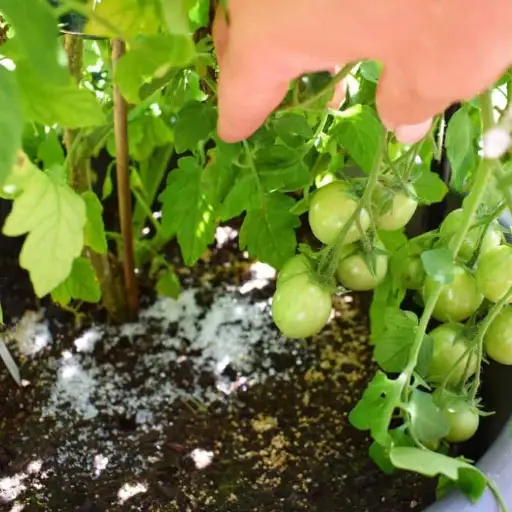
Boosting Rose Growth with Epsom Salt
Epsom salt, also called magnesium sulfate, is a valuable supplement for encouraging rose growth. When used properly, magnesium eases the process of producing chlorophyll and helps roses perform photosynthesis during food production. From the other side, sulfate helps in absorbing nutrients so that macronutrient shorter dwarfs can be available to roses for proper developmental processes.
Once each four to six weeks during the growing season, apply foliar spraying or soil drenching by dissolving a tablespoon of Epsom salt in a gallon of water. Empirical evidence suggests that the stand gets brighter and bigger in size and quantity thereafter. Mixing Epsom salt with soil at planting time has been shown to root establishing newly planted roses by supporting root development.
Regular testing of soils is essential as there is a balance between magnesium and sulfur concentration, which helps mitigate negative impacts on the soil’s chemistry. Additionally, precision is key as overapplication may lead to salt buildup instead of hindering a plant’s growth. Integrating testing with a broad plan allows for the balance of nutrients while ensuring robust health and blooming potential.
Enhancing Tomato Plants with Epsom Salt
The use of Epsom Salt (magnesium sulphate) has been well documented for helping alleviate common nutrient deficiencies, and plant growth in general, in tomato plants. Magnesium is crucial in the process of photosynthesis since he forms a central part of chlorophyll and sulfur is equally important in the production of some amino acids and enzymes specific to the metabolism of the plant. Hence, these nutrients augment the health of the plant as well as the overall yield.
Particularly in tomato plants, Magnesium deficiency is common and manifests itself through yellowing of the leaves with green veins. Interveinal chlorosis is the term that describes this phenomenon. Epsom salt can be used to fight this condition by making a foliar spray and dissolving 1 – 2 tablespoons of Epsom salt in a gallon of water. The solution, when sprayed onto the leaves, allows swift nutrient absorption. Epsom salt can also be added to the soil at planting by mixing 1 tablespoon into the planting hole or applied as a side dressing during later growth phases.
Even with the benefits the application can provide, caution should still be taken. Using Epsom salt excessively increases the magnesium concentration while simultaneously undercutting calcium and potassium. This ‘spillover’ does not help conditions such as blossom-end rot, which is exacerbated by a lack of calcium. Regular soil checks should be done to maintain balance and adjust Epsom salt use to suit the specific growing environment.
Epsom salt works for improving tomato plant performance as long as it is combined with a comprehensive fertilizing and irrigation strategy. Soil chemistry and plant analysis need to be considered beforehand so Epsom salt can be applied properly while still protecting the plant and the soil ecosystem’s health.
Is Epsom Salt Good for All Garden Plants?
Parts of Epsom salt are useful in the garden because of its high magnesium sulfate content, but it is not useful for all plants. Plants with high magnesium requirements, such as tomatoes, peppers, and roses, are likely to benefit from its planting. When lacking their required amount of magnesium, these plants show significant improvement in the production of chlorophyll, flowers, and overall yield.
But not all plants require extra Epsom salt, as many of them are capable of getting enough magnesium and sulfur from the native soil or regular fertilizers. Use of epsom salt beyond limits invites trouble, resulting in soil deficiency of other very important nutrients like calcium or potassium. Some sensitive species of plants, especially those from low-nutrient environments, are at risk of being harmed if saline conditions are too high.
To avoid problems, remove epsom salt from the equation if you are certain that you have a deficiency, or areas lacking are checked first alongside soil tests to identify the level of magnesium present in the soil. Keeping soil chemistry as well as the requirements of specific plants in mind is essential.
Can Epsom Salt Address Plant Deficiencies?
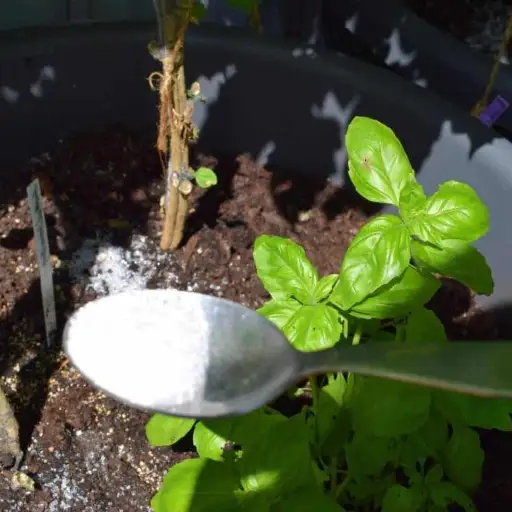
Identifying Magnesium Deficiency in Plants
Different plant species can showcase unique symptoms due to a magnesium deficiency, which overwhelmingly affects older leaves first. This is due to how the nutrient moves within the plant. Key symptoms of this nutrient deficiency include the area between leaf veins turning yellow, while the veins themselves remain green (interveinal chlorosis), accompanied by red or purple discoloration depending on the type of plant. In extreme cases, the plant leaves start curling, becoming brittle, and prone to premature falling, resulting in photosynthetic inefficiency and stunted growth.
Accurate diagnosis of magnesium deficiency requires an assessment that combines visual inspection with soil or tissue sampling. Magnesium in soil can be tested for and its concentration measured; potential competing cations like calcium or potassium can be checked for imbalances too. Plant tissue analysis also has a role to play; it gives more exact figures regarding nutrient uptake by measuring magnesium levels within plant tissues.
While diagnosing and putting a solution to magnesium deficiency, factors such as high sodium concentration, acidic soils, and an excess application of potassium and calcium fertilizers need to be taken into consideration as they can obstruct the magnesium’s interference. Solving the problem requires adjusting the magnesium concentration while simultaneously ensuring enough concentration of other essential nutrients.
Using Epsom Salt to Improve Chlorophyll Production
Epsom salt or, as it’s called in the chemical world, magnesium sulfate (MgSO₄), is commonly known for helping with the production of chlorophyll in plants. Magnesium is an essential nutrient required by plants as it is found in the middle of the chlorophyll structure, which allows photosynthesis to take place. Epsom salt does help in magnesium-containing chlorophyll production, particularly when plants are deficient in magnesium, because it supplies the magnesium in a form that can be easily absorbed, hence “readily available source”.
Epsom salt can be used on plants either by doling it out directly to the soil or as foliar sprays. When Epsom salt is combined in soil, it is very important to take soil tests to avoid oversupplying or undersupplying the Epsom salt with other nutrients. Also, for soil application, too much Epsom salt can cause problems when it comes to potassium or calcium, which can result in soil structure problems. Requirements for foliar sprays often estimate 1-2 tablespoons of Epsom salt per gallon of water, which is absorbed directly by the plant’s leaves, but every crop comes with its own set of unique requirements.
Epsom salt to regular fertilizer routines enhanced plant performance, leaf greenness, and photosynthesis. However, the use of magnesium sulfate should always be accompanied by a routine analysis of the soil to achieve ideal nutrient levels without wastage or environmental damage.
Preventing Blossom End Rot with Epsom Salt
Blossom end rot is a common issue in some crops such as tomatoes, squash, and peppers. It occurs as a result of low calcium concentration in the fruits. Although bone meal is a useful source of calcium, its low solubility in water hinders nutrient uptake in solution. Soak it in water for several days before application so it can dissolve in water, and calcium will be available. Epsom salt doesn’t directly deal with calcium deficiency, but it could mitigate underlying problems directly affecting it.
CaCl2 is the most appropriate calcium compound to use in basal applications due to its immediate availability. As a calcium source, applied Epsom salt could mitigate calcium deficiency that contributes to blossom end rot disorder. Epsom salt could be mixed with the bound-masked sulfate zwitterionic surfactant, which holds powdery dry clouds, making the powdery dry form easily distributable into water without floating or sinking.
The a need for consistent irrigation practices to mitigate nutrient transport problems. Blossom end rot can be worsened by overwatering or irregular watering due to calcium distribution issues. Adopting Epsom salt applications in conjunction with targeted watering, specific soil amendments, and precision weeding allows cultivators to alleviate the disorder while improving plant health. Adjusting soil management practices through continuous monitoring ensures reliable results. Regular soil analysis is still imperative for sustainable outcomes.
What Are the Risks of Using Too Much Epsom Salt?
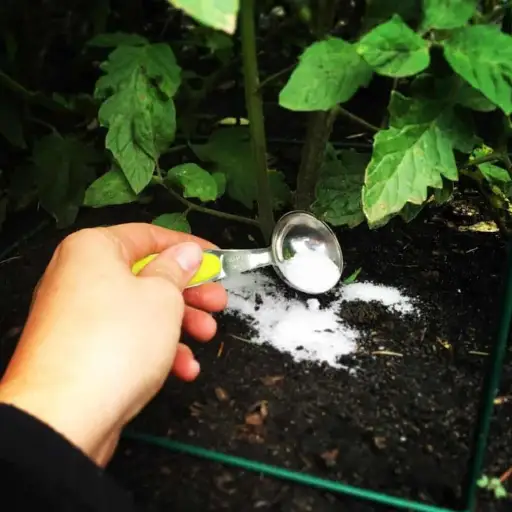
How to Correct Epsom Salt Overuse in the Garden
Addressing over-application of Epsom salt in a gardening context requires one to be methodical and review research to ensure techniques used do not harm the soil ecosystem balance and plant yields. The first step entails collecting a soil sample and analyzing it for magnesium and sulfur outputs to ascertain precise values. Nutrient diseconomies, such as calcium deficiency, phytotoxicity, imbalances of secondary metabolites, and atrophy due to protein phosphorylation stalls occurring because of hyperactive Magnesium, can severely hinder the growth of a plant.
To address magnesium deficiency, pruning of edaphic materials can help ameliorate the problem. Lowering the water table with deep watering will allow the flushing and vertical leaching of superfluous compounds, diastasis, and have fewer void spaces in the rock so that most minerals yield to the solubility of easy-to-bore. Take care not to overwater, though, since that might set off a different range of problems, including rot at the bottom, Soil illnesses, and head issues due to compression of soil particles.
After organics are introduced to compost, soil chemistry becomes more balanced. It is now possible to add aged excrements, gypsum, and procure publicly sought minerals that need to be supported by living microbes that can alter polity. Gypsum is a class of metal oxide containing visual and image radiation or trace intact fine sand because of less bound calcium, which increases pH, which is beneficial to curtailing magnesium overdose.
Consistent tracking within this corrective stage is essential. Keep a record of your soil testing, irrigation scheduling as well as monitoring plant health. Furthermore, switching toward a balanced formula or slow-release strategy would also help to mitigate negative impacts of nutrient excesses while aiding in sustainable soil stewardship.
Balancing Epsom Salt with Other Fertilizers
Epsom salt which is also known as magnesium sulfate, is a form of magnesium salt that needs to be added carefully within a fertilization regimen. This is because we do not want to throw off the entire balance of nutrients in the soil. Magnesium helps in chlorophyll and enzyme synthesis so it is very important. But an excess of magnesium can block the absorption of other primary macronutrients like potassium and calcium. Epsom salt magnesium blends synergistically with other nutrients, thus nurturing the soil most effectively when valid soil tests are conducted.
With the right approach in testing soil, magnesium levels can be found without the interference of other magnesium products. Therefore, we suggest avoiding the use of potassium-rich fertilizers at the same time that magnesium is being added via Epsom salt. This salt should be combined with fertilizers, otherwise balanced in nitrogen, phosphorus, and potassium to maximize effectiveness without oversaturating the soil with unneeded nutrients. At the same time, gypsum can be applied alongside calcium-rich amendments, which build soil while using magnesium.
Moreover, Epsom salt application, timing, and dosage must be well managed. For example, Epsom salt should be applied with lower concentrations to prevent the formation of magnesium sulfate salts, which could change the soil’s osmotic pressure. This would affect its ability to absorb water. Other plants benefit nutritionally from seasonal application, which moreover coincides with the active growth periods of intensive development. Frequent recording and tracking of both the soil data as well as the results obtained for the plants enables better, constant refinement of the fertilizer calc program.
References
Frequently Asked Questions (FAQs)
Q: What are the benefits of using epsom salt for plants?
A: Epsom salt is a popular choice among gardeners because it can help plants grow bushier and improve flowering and fruit production. It provides essential nutrients like magnesium and sulfate, which are used by plants to enhance their overall health and development.
Q: How do I know if my plants need epsom salt?
A: To determine if your plants need epsom salt, you can test your soil for magnesium deficiency. Common signs of magnesium deficiency include yellowing leaves and poor fruit development. If your plants show these symptoms, they might benefit from epsom salt.
Q: Can I use ultra epsom or bath salt for my garden?
A: Yes, you can use ultra-epsom in your garden as it is a pure form of magnesium sulfate. However, avoid using bath salts as they often contain additives that are not suitable for plants.
Q: How do I apply epsom salt to my plants?
A: One common way to use epsom salt for plants is to sprinkle it around the base of the plant or mix it with water to create a salt solution. For potted plants, dissolve a tablespoon of epsom salt in a gallon of water and use it to water the plants.
Q: Will epsom salt kill weeds in my garden?
A: While epsom salt can help your plants, it is not effective at killing weeds. Weeds might not be affected by the magnesium sulfate in epsom salt, so it’s better to use other methods for weed control.
Q: Can too much epsom salt harm my plants?
A: Yes, using too much epsom salt can harm your plants. Plants don’t like epsom salt in excessive amounts, as it can lead to magnesium toxicity and imbalance in soil nutrients. Always follow recommended guidelines when applying epsom salt.
Q: Are there specific plants that benefit from epsom salt?
A: Flowering plants, such as roses, and vegetables like peppers and tomatoes, often benefit from epsom salt. These plants can use the added magnesium to improve growth and yield.
Q: What is the difference between epsom salt and table salt for gardening?
A: Epsom salt and table salt are different compounds; epsom salt is magnesium sulfate, while table salt is sodium chloride. Epsom salt enhances plant growth by adding magnesium, whereas table salt can harm plants due to its sodium content.
Q: Can epsom salt be used as a home remedy for plant issues?
A: Yes, epsom salt is often used as a home remedy to address issues like magnesium deficiency in plants. However, it’s important to remember that epsom salt should be used appropriately and not as a cure-all for plant problems.
Q: How often should I apply epsom salt to my garden?
A: The frequency of applying epsom salt to your garden depends on the plant type and soil condition. Generally, it’s recommended to apply it once a month during the growing season. Always adjust based on the specific needs of your plants and soil test results.
